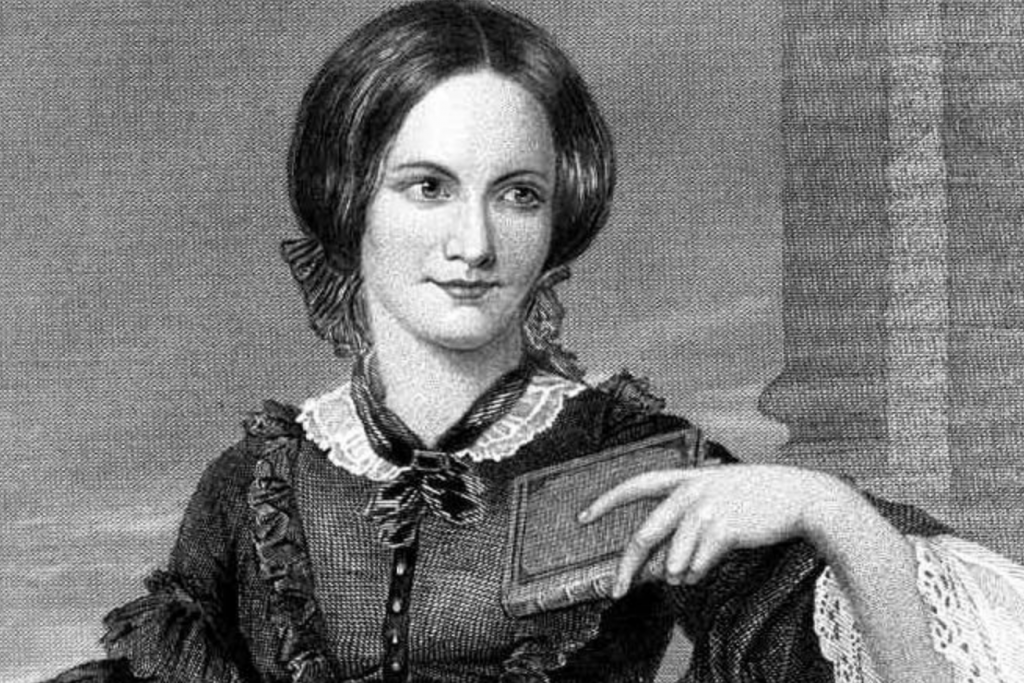April 21, 1816 – March 31, 1855
Biography
Charlotte was the third of six children. When the girl was five, her mother passed away, and her aunt Elizabeth Brenwell moved into their parish rectory to look after the orphaned children. When Charlotte was eight years old, her two older sisters, Mary and Elizabeth, died of consumption. This event made Charlotte responsible for the family, and the eldest of the four remaining children, which strengthened her personality and spirit.
Charlotte Brontë was short, frail, wore glasses to correct her nearsightedness, and considered herself unattractive. She was a political conservative, strict, intelligent and ambitious. She had high moral principles, and despite her modest public demeanor, she was always ready to defend her point of view.
The writer spent eight months in 1824 at Clergy Daughters School, in the village of Cowan Bridge, which served as the prototype of the Lovud School in the novel Jane Eyre. She was then a pupil at Roe Head School in Dewsbury, West Yorkshire, for two years, and worked as a teacher there for another three years. It was at Roe Head that she made two faithful friends, Ellen Nassie and Mary Taylor. Then, from 1842-1843, she was at Mrs. Auger’s boarding house (Brussels), where she fell in love with her own teacher, Constantin Auger. Between 1824-1831, she and her brother and sisters were homeschooled by her father and Aunt Brenwell. Charlotte was a splendid artist, a needlewoman, and, of course, a writer.
Mrs. Brontë wanted her daughters to become governesses. Charlotte changed two jobs – for three months (in 1839) she lived with the Sidwick family at Stonewaype, in Lozerdale. She then spent six months with the White family at Upperwood House in Rodon. Charlotte disliked her job, and suggested that the three sisters, Emily and Ann, open their own school in Haworth. Aunt Brenwell wanted to arrange the material side of things, but those plans never came to fruition.
What Charlotte really wanted was to be a writer. From a very young age, she and her brother Brenwell practiced writing poems and stories, relying on their rich imagination and the fictional world of Angria. As Charlotte herself claimed – her mind was so prolific that she wrote far more before she was thirteen than she did afterward.
In 1846, Charlotte convinced her sisters to publish a collection of poems under the male pseudonyms of Currer, Ellis, and Acton Bell-it was a commercial failure. By the end of 1847, however, the debut novels of all three sisters had been published, and Charlotte Brontë’s Jane Eyre was a tremendous success.
After the publication of the book “Shirley” in 1849, there were rumors that under the male pseudonym of Carrer Bell hides a simple teacher. Charlotte became a celebrity in literary circles, and the publication of the novel Villette in 1853 only strengthened her reputation.
In December 1852, Charlotte receives a marriage proposal from the vicar (second priest of the parish) of her father, Arthur Bell Nicholls. Charlotte’s father was against the union, in part because he thought his daughter was too sickly to bear and bear a child without dire consequences, and, not to upset her father, Charlotte refused Arthur. In spite of this, Bell Nicholls did not give up, and continued his courtship, and eventually the couple were married on June 29, 1854. The marriage was a happy one, but very short. Charlotte Brontë died in her last pregnancy on March 31, 1855.
